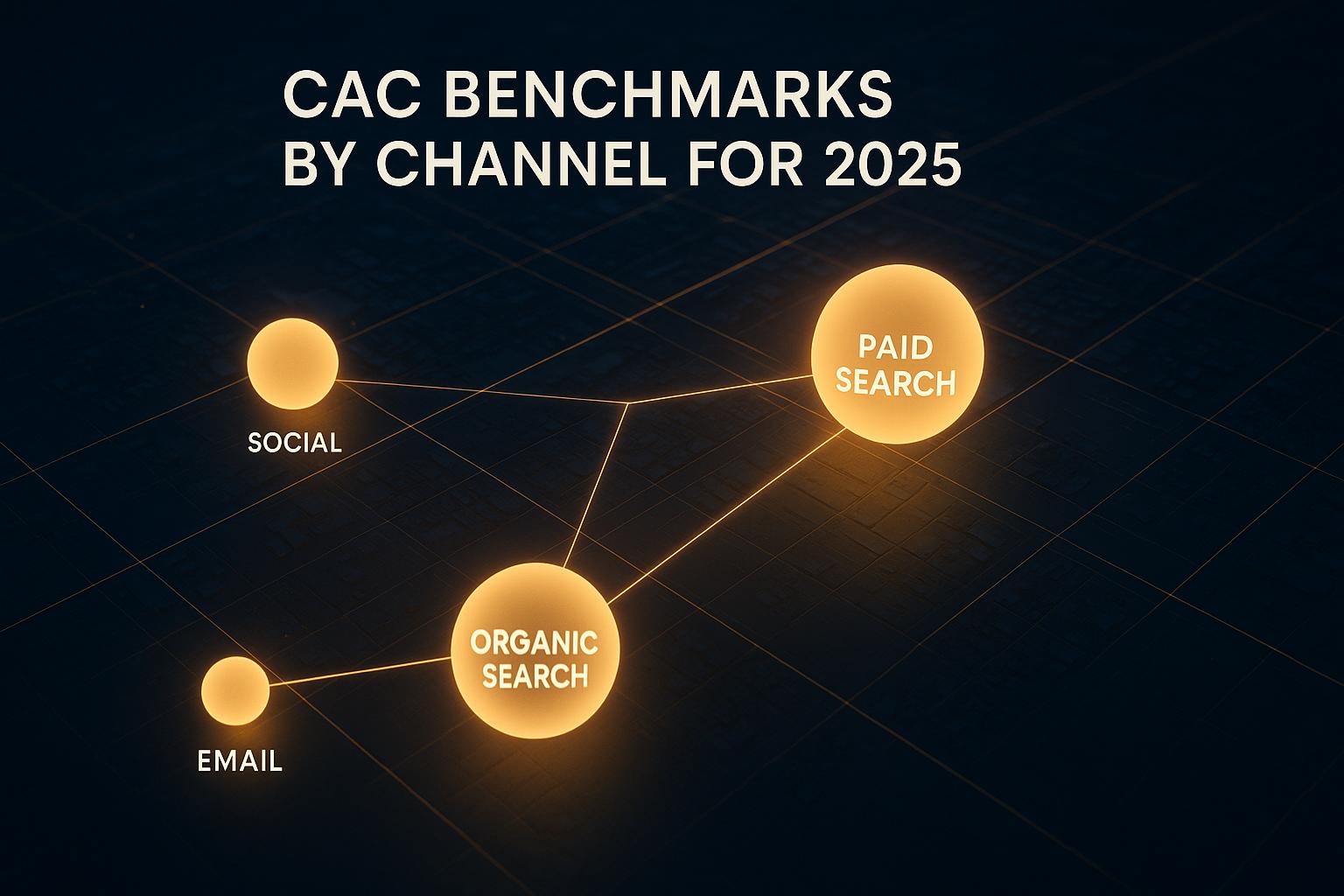Unit Economics of Loyalty Programs: What to Know

Loyalty programs can help businesses retain customers and boost revenue, but they come with costs that must be carefully managed. To evaluate profitability, understanding unit economics - how costs and revenue tie to each customer - is essential. Here’s a quick breakdown of the four common loyalty models:
- Points-Based: Customers earn points to redeem rewards. Costs include tracking systems, reward fulfillment, and liability management.
- Tiered: Offers perks at different spending levels, motivating higher purchases. Balancing benefit costs and tier qualifications is key.
- Cash-Back: Provides immediate monetary rewards. Simple to run but directly impacts profit margins.
- Coalition: Multiple brands share a loyalty framework. Broader reach but involves complex cost-sharing and operations.
Each program type has unique cost structures, revenue drivers, and management challenges. Aligning the right model with your business metrics - like customer acquisition costs, lifetime value, and margins - is critical for profitability.
1. Points-Based Programs
Points-based loyalty programs work on a straightforward idea: customers earn points for their purchases and can later redeem them for rewards. To make these programs successful, businesses need to manage point valuations, track redemptions, and handle financial liabilities effectively. Let’s break this down, starting with the cost considerations.
Cost Structure: Balancing upfront investments and ongoing expenses
Launching a points-based program requires a significant initial investment in technology. This includes building a reliable system to track points, creating customer dashboards, and setting up platforms for point redemption.
Beyond the upfront costs, operational expenses play a big role. The cost of issuing points depends on how often customers redeem them and the value assigned to each point. Fulfilling rewards - whether they’re physical products or digital perks - adds another layer of complexity. On top of that, businesses need to account for administrative costs like customer service, fraud prevention, and overall program management. All these factors directly impact the program’s profitability.
Revenue Impact: Driving customer behavior while managing costs
When done right, points-based programs can lead to increased revenue by encouraging customers to shop more often and spend more per transaction. Additionally, unredeemed points (known as breakage) can improve margins if managed carefully, though businesses must follow strict accounting rules to track them properly. The key is ensuring that the extra revenue generated through improved customer behavior outweighs the costs of running the program.
Scalability: Growing membership to improve efficiency
These programs tend to scale well as more customers join. While variable costs rise with increased participation, fixed costs are spread across a larger base, improving overall efficiency. As programs grow, businesses can often negotiate better deals with reward suppliers, expand redemption options, and use advanced customer segmentation to boost engagement. However, scaling successfully requires careful attention to financial liabilities.
Liability Management: Keeping obligations under control
Every point issued represents a financial liability, so managing these obligations is critical. Outstanding points are treated as deferred revenue, which means businesses need clear policies for point expiration and handling inactive accounts. Expiration rules should strike a balance - reducing liability while keeping customers happy. Setting thoughtful redemption thresholds can also encourage steady participation while controlling financial risks.
2. Tiered Programs
Tiered loyalty programs organize customers into different membership levels based on their spending or engagement. Each level comes with its own set of perks, which become more appealing as customers climb the tiers. Unlike traditional points-based systems, tiered programs focus more on recognizing customer status and offering exclusive experiences rather than just transactional rewards. But designing these programs requires careful planning to balance the cost of benefits with the criteria for moving between tiers. Let’s take a closer look at how these cost structures influence program design.
Cost Structure: Managing Benefits Across Multiple Tiers
One of the biggest challenges in tiered programs is controlling benefit costs. Unlike points-based systems that simply track numerical liabilities, tiered programs come with variable costs that increase as customers move up the tiers. For example, entry-level perks might include free shipping, while higher tiers could offer personal shopping services, access to exclusive events, or premium merchandise.
To make this work, businesses often invest heavily in technology to improve customer segmentation and personalization. These systems need to track customer progress toward tier upgrades, send targeted communications for each level, and manage the delivery of tier-specific perks. On top of that, customer service teams must be trained to handle questions and requests unique to each tier, especially for premium benefits.
High-cost benefits at the upper tiers make it essential to set qualification thresholds carefully. If too many customers barely meet the criteria for a higher tier but frequently use expensive perks, the program’s profitability can take a hit.
Revenue Impact: Driving Spend Through Status Motivation
Tiered programs are designed to encourage customers to spend more by playing on their desire for exclusivity and status. This strategy often leads to higher revenue, as customers are motivated to make additional purchases to reach or maintain a higher tier. Retention rates also tend to improve, especially among customers who value their tier status.
Interestingly, a small group of high-tier customers often generates a disproportionately large share of revenue. This makes it vital for businesses to manage these top-tier members carefully, ensuring their rewards align with the program’s overall profitability goals.
Scalability: Balancing Growth With Benefit Costs
While technology costs generally decrease as programs scale, the same can’t be said for premium benefits like concierge services or exclusive events. These perks remain expensive, which can limit how much the program can grow. To address this, businesses often focus on optimizing their benefit offerings. For instance, digital perks or partnerships with other brands can allow for growth without a significant increase in costs.
Another key to scalability is maintaining a balanced distribution of customers across tiers. If too many people qualify for the top tiers, benefit costs can spiral out of control. To prevent this, businesses may adjust qualification criteria or even introduce new tiers, keeping the program both financially sustainable and aspirational.
Liability Management: Controlling Benefit Commitments
Unlike points-based programs, where liabilities are tied to accumulated points, tiered programs create ongoing obligations to provide benefits as long as customers maintain their tier status. This creates continuous financial responsibilities that need to be carefully managed.
Setting tier qualification periods - whether annually, on a rolling 12-month basis, or aligned with the calendar year - helps align the cost of benefits with recent customer activity. This not only influences customer behavior but also aids in financial planning. Monitoring how often different perks are used across tiers is equally important, as it helps businesses decide if adjustments to the benefit structure are necessary.
Additionally, policies like grandfathering existing tier members can help maintain customer loyalty but may also create long-term financial obligations. Managing these liabilities effectively is just as important for tiered programs as it is for points-based systems to ensure the program remains economically viable.
3. Cash-Back Programs
Cash-back programs, much like points-based or tiered models, aim to strike a delicate balance between attracting customers and managing costs. These programs offer customers a percentage of their spending back as real money, providing an immediate and clear benefit. However, while their simplicity is appealing, they come with financial challenges that require thoughtful management to ensure profitability.
Cost Structure: Impact on Margins
Every cash-back transaction directly impacts profit margins. For instance, offering 2% cash back on purchases means an automatic reduction in margins unless offset by increased revenue. While operational costs for these programs are generally lower - there’s no need for complex systems to track points or tiers - businesses must still account for expenses like payment processing fees and the administrative work involved in distributing rewards.
To minimize costs, many businesses opt to issue cash-back rewards via digital wallets or account credits, sidestepping fees tied to traditional payment methods. However, seasonal shopping spikes, like Black Friday or the holidays, can significantly raise cash-back payouts, creating cash flow pressures that demand careful financial planning.
Understanding these costs is essential for evaluating how cash-back programs influence customer behavior and revenue generation.
Revenue Impact: Simplicity Drives Engagement
The straightforward nature of cash-back programs makes them highly effective at attracting customers. People instantly grasp the value they’re getting, which often leads to quicker adoption and more frequent purchases.
These programs work best when they encourage customers to concentrate their spending with a single provider. For example, credit card companies often rotate cash-back categories to guide spending toward the most profitable areas. The challenge lies in ensuring that the extra revenue generated by these loyal customers outweighs the cash-back payouts. This requires a close look at customer lifetime value and changes in purchasing habits after joining the program.
Scalability: Managing Growth and Costs
While cash-back programs are easy to scale from a technology standpoint, their cost structure grows directly with transaction volume. Unlike other loyalty programs that might involve complex systems for tracking points or tiers, cash-back programs rely on simpler infrastructure, making them easier to implement.
However, as transaction volumes grow, so do cash-back obligations. This means businesses must have strong working capital management to meet payout demands without disrupting their core operations. Scaling a cash-back program successfully requires careful financial planning to ensure that increased costs don’t outweigh the benefits.
Liability Management: Real-Time Financial Commitments
Cash-back programs create immediate financial liabilities. Unlike points, which might never be redeemed, cash-back rewards are tangible and expected by customers, making liability management both simpler and more critical.
To manage these obligations, businesses often schedule payouts monthly or quarterly. Some programs set minimum thresholds for payouts, reducing administrative costs and giving the business more time to manage cash flow.
For industries like financial services, regulatory compliance is especially important. Companies must clearly outline payout terms, maintain accurate records, and ensure they have enough reserves to cover all rewards. The straightforward nature of cash-back programs makes them easier to audit, but it also means there’s less room for error.
With cash-back programs, financial planning becomes more predictable since liabilities are tied directly to sales. This certainty can actually be an advantage, allowing businesses to forecast costs more accurately and budget accordingly.
sbb-itb-e766981
4. Coalition Programs
Coalition programs bring together multiple brands under one loyalty framework, allowing customers to earn and redeem rewards across a variety of companies. This approach can broaden customer engagement and reach, but it also introduces intricate cost and revenue-sharing challenges. Unlike single-brand loyalty programs, coalition models require careful coordination among partners to manage shared responsibilities, making them more complex to operate.
Cost Structure: Shared Expenses and Complex Allocations
In coalition programs, expenses are shared among participating brands. Each partner typically pays a membership fee along with ongoing costs tied to customer activity, such as earning and redeeming rewards. These fees can vary significantly depending on the program's size and the level of involvement from each brand.
Cross-brand redemptions add another layer of complexity. For example, when a customer earns points with one brand but redeems them with another, the coalition must facilitate financial settlements between the involved companies. This process demands precise tracking and frequent reconciliation, which can increase administrative burdens.
Additionally, technology plays a critical role. Coalition programs require advanced platforms capable of integrating multiple brands, managing different earning rates, and offering a variety of redemption options. These systems must be regularly updated to accommodate new partners or changes in existing agreements, further driving up costs.
Revenue Impact: Broader Reach, Less Control
One key advantage of coalition programs is their ability to introduce brands to new audiences. A customer who joins the program through one brand provides exposure to all participating partners, potentially driving business across the coalition.
However, with this broadened reach comes a trade-off in control. Sharing customer data and insights among partners might limit a brand’s ability to deliver exclusive experiences or highly targeted campaigns. Instead of fostering loyalty to a single brand, the program spreads customer allegiance across multiple companies.
Revenue attribution also becomes a tricky issue. When customers interact with several brands within the coalition, determining which partner should receive credit for increased spending requires advanced analytics and clearly defined agreements on performance metrics.
Scalability: Growth with Added Complexity
Coalition programs thrive on network effects - the more partners that join, the more appealing the program becomes to both customers and existing members. This dynamic can lead to rapid growth, attracting top-tier brands and enabling expansion across industries and regions.
However, scaling up also brings operational challenges. Each new partner requires system integration, training for their staff, coordinated marketing efforts, and legal agreements. These tasks must account for different business models, seasonal trends, and operational priorities, which can complicate day-to-day management.
Expanding into international markets adds another layer of difficulty. Coalition programs must navigate varying regulations, currency exchanges, and customer preferences while ensuring a consistent experience across regions.
Liability Management: Balancing Financial Risks
Managing liabilities in coalition programs is particularly challenging. These programs involve multi-party financial obligations that require clear contractual agreements. For instance, when a customer earns points with one brand but redeems them with another, the coalition must ensure accurate financial settlements and maintain reserves to cover these obligations.
If a major partner unexpectedly exits the program, the remaining members may need to shoulder additional costs to maintain customer trust and program stability. This risk often leads to the need for larger cash reserves and more cautious financial planning than in single-brand programs.
Regulatory compliance further complicates matters. Coalition programs spanning multiple industries must adhere to a range of financial, privacy, and consumer protection laws. This requires specialized legal and compliance expertise, particularly as the distributed nature of these programs can make financial reporting and auditing more challenging. Each partner needs clear visibility into their share of costs and liabilities, while the coalition operator must oversee the program's overall financial health.
Benefits and Drawbacks
Every loyalty program type comes with its own set of advantages and challenges, each influencing a business's financial performance in unique ways. Carefully weighing these trade-offs allows companies to align program design with their financial objectives, directly impacting the unit economics discussed earlier.
Points-based programs are highly adaptable when it comes to managing costs and influencing customer behavior. Businesses can tweak point values, earning rates, and redemption options to protect their profit margins. However, the downside is the administrative complexity involved in tracking large volumes of transactions and managing liabilities.
Tiered programs are excellent at encouraging customers to spend more by creating clear incentives to reach higher tiers. This often leads to increased purchase frequency and larger basket sizes. On the flip side, these programs tend to appeal less to occasional shoppers. Plus, offering premium perks to top-tier members can strain profitability if not carefully managed.
Cash-back programs stand out for their simplicity and transparency. Customers immediately understand the value they’re getting, which often results in higher enrollment and satisfaction. The trade-off, however, is the direct impact on margins, as cash-back rewards impose immediate financial costs.
Coalition programs offer broad reach and customer acquisition through partnerships, making loyalty programs accessible even for smaller brands. But they come with significant challenges, including reduced control over customer interactions and complicated revenue-sharing models. Managing operational complexity and revenue attribution can also be tricky.
| Program Type | Key Benefits | Primary Drawbacks | Cost Control | Revenue Impact |
|---|---|---|---|---|
| Points-Based | Flexible cost management | Complex liability tracking | Excellent | Moderate to High |
| Tiered | Encourages higher spending | Limited appeal for casual shoppers | Good | High |
| Cash-Back | Clear and simple for customers | Immediate margin pressure | Limited | Moderate |
| Coalition | Expands reach through partnerships | Reduced control, complex operations | Challenging | Variable |
Another critical factor is scalability, which varies across program types. Points-based and tiered programs leverage existing technology to scale efficiently but come with growing administrative demands. Coalition and cash-back programs, on the other hand, require significant capital and precise margin management to scale successfully. Cash-back programs, in particular, grow in cost directly with volume, making margin control essential.
The choice of loyalty program often depends on a company’s goals and financial situation. For businesses with tight margins, points-based programs offer more flexibility. Companies focused on rapid customer acquisition may lean toward the straightforward appeal of cash-back programs. Those aiming to maximize customer lifetime value often invest in tiered programs, despite their operational challenges.
Finally, it’s worth noting that loyalty program structures can influence company valuations and investor confidence, especially during funding rounds or acquisitions. Understanding the balance of benefits and drawbacks is crucial for designing loyalty strategies that align with financial sustainability and long-term growth.
Conclusion
Loyalty programs are all about aligning the program type with your business model and financial resources. Each type comes with its own cost structure and revenue potential, which makes choosing the right one a critical step toward long-term profitability.
For growth-stage companies, this decision requires even more careful consideration. Points-based programs provide flexibility during periods of rapid expansion. Tiered programs are excellent for boosting customer lifetime value with advanced tracking capabilities. Cash-back programs work well for businesses with strong profit margins, while coalition programs allow companies to broaden their reach and share customer acquisition costs. Tailoring the program to your specific circumstances can help you better understand the broader financial impacts.
These programs directly influence key metrics like customer acquisition costs, retention rates, and average order values. For growth-stage companies, these numbers are especially important, as they play a significant role in shaping company valuations during funding rounds or eventual exits. Investors increasingly focus on the sustainability and scalability of retention strategies, making a clear understanding of these metrics essential.
Given the financial complexities involved, seeking expert guidance can make a big difference. Phoenix Strategy Group specializes in helping growth-stage companies analyze unit economics and optimize their revenue strategies, including loyalty programs. Their fractional CFO services and FP&A expertise provide the financial modeling and strategic insights needed to fine-tune loyalty programs for both immediate results and long-term growth.
The best loyalty programs go beyond being simple marketing tools - they’re strategic financial assets that require thoughtful planning, ongoing evaluation, and continuous improvement to generate sustainable returns.
FAQs
How can businesses manage the financial risks of points-based loyalty programs effectively?
To keep the financial risks of points-based loyalty programs in check, businesses need to stay on top of how many points are outstanding and estimate what it will cost when those points are redeemed. Work closely with your finance team to calculate an accurate cost per point (CPP) and keep an eye on redemption rates. This approach helps you clearly understand the financial impact of your loyalty program.
It's also smart to design the program in a way that balances points earned with points redeemed, reducing potential liabilities. On top of that, using predictive analytics can offer valuable insights into future redemption patterns. This makes it easier to allocate resources wisely and ensure the program stays profitable.
How can businesses design tiered loyalty programs that are both profitable and appealing to top-tier customers?
To design tiered loyalty programs that are both profitable and attractive, businesses need to prioritize smart customer segmentation and craft rewards that drive spending without inflating costs. Tailored incentives - like special discounts or unique experiences - can inspire customer loyalty while keeping the program financially manageable.
Another key approach is tapping into secondary revenue streams, such as collaborations with complementary brands, to help balance program expenses. By consistently reviewing customer behavior and engagement data, businesses can fine-tune their tier structures to match customer preferences, ensuring the program delivers strong ROI and remains effective.
How do coalition loyalty programs affect a brand's control over customer data and personalized marketing?
Coalition loyalty programs let brands team up to share customer data, creating opportunities for cross-promotion and customized marketing within the group. This collaborative setup can boost customer engagement, but it often comes with a trade-off: individual brands may lose some control over their data since it's managed collectively by the coalition.
This shared approach can make it harder for brands to independently craft marketing strategies or access detailed customer insights without working closely with other coalition members. To make the most of these programs, businesses should develop clear governance policies that strike a balance between protecting customer privacy, maintaining brand identity, and preserving marketing independence.




